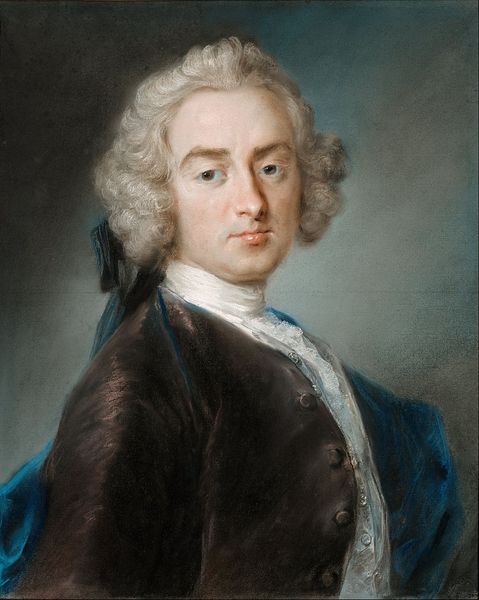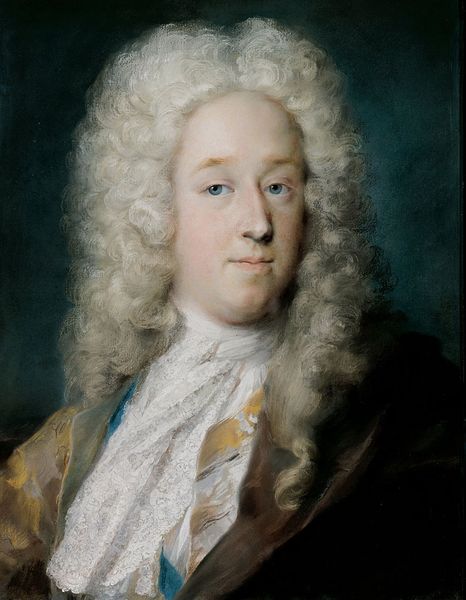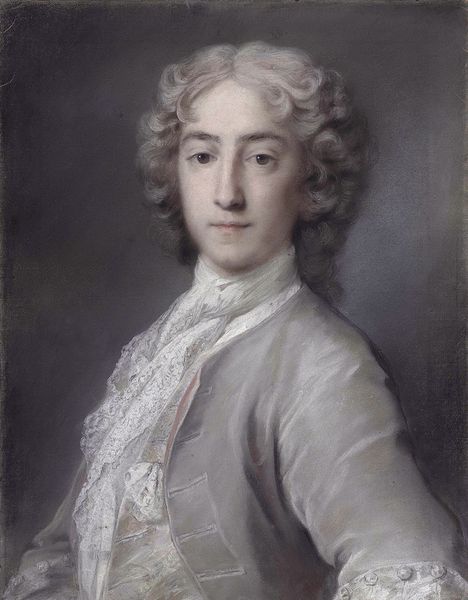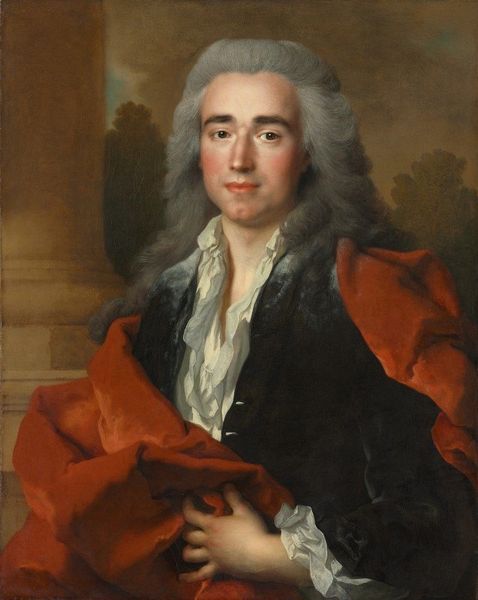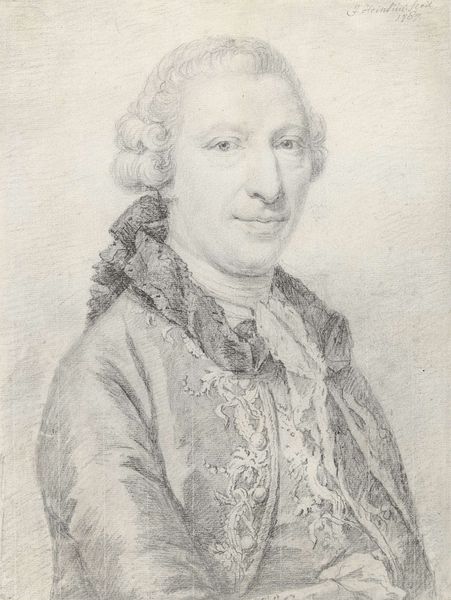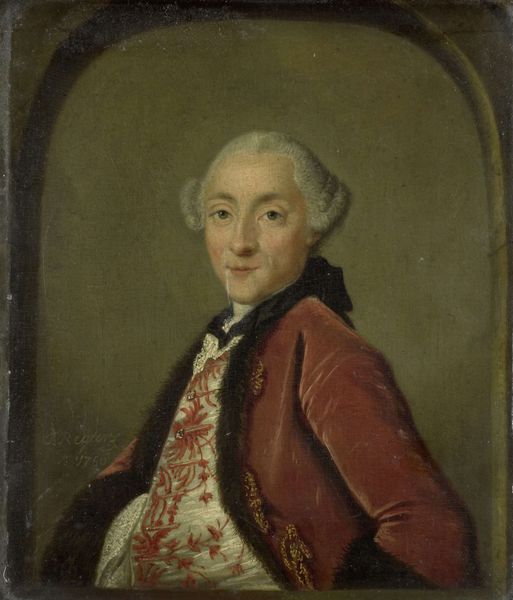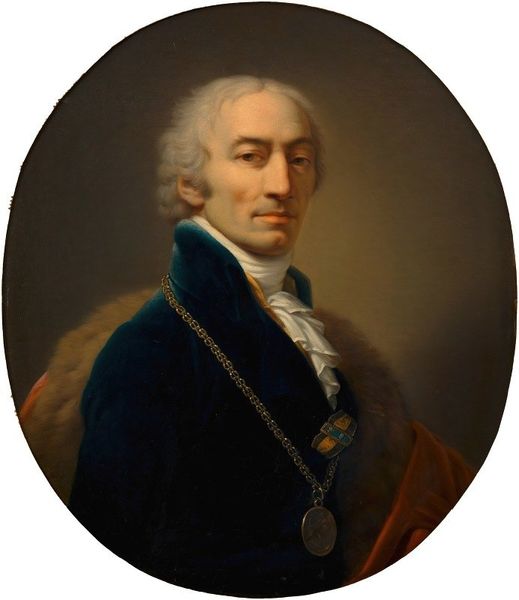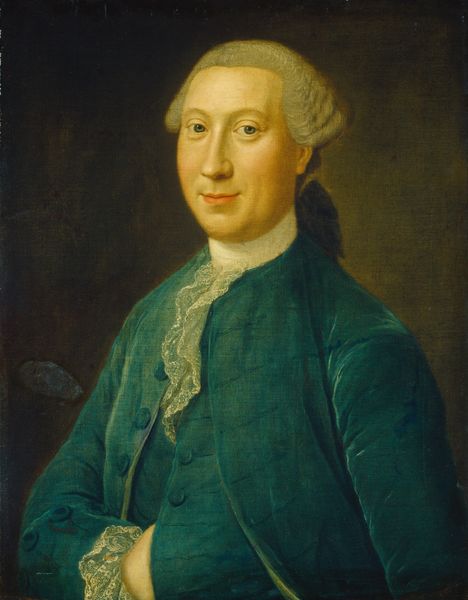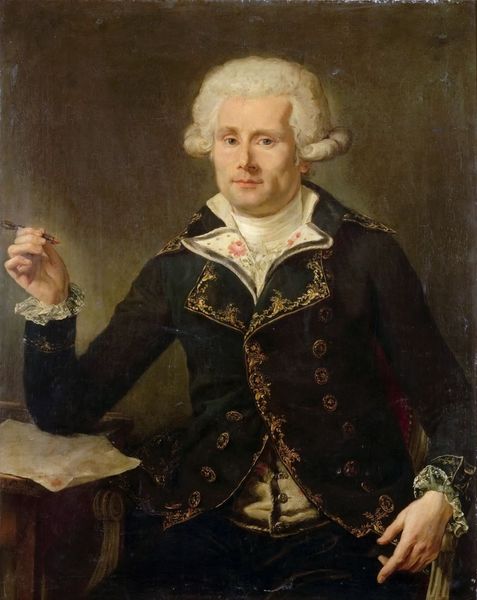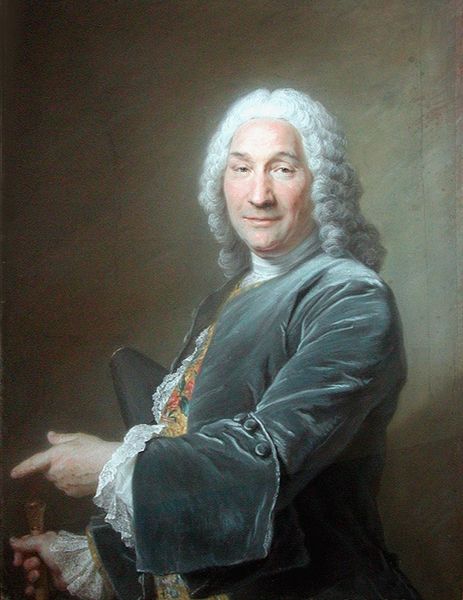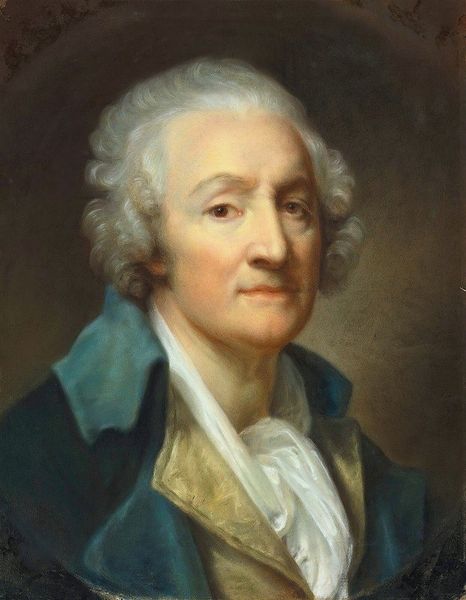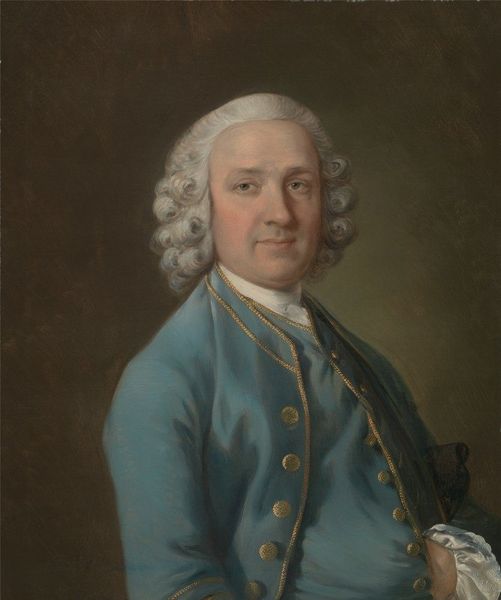
Copyright: Public Domain: Artvee
Curator: We’re standing before Élisabeth Louise Vigée Le Brun's 1787 oil-on-canvas portrait of Alexandre Charles Emmanuel de Crussol-Florensac. Editor: It's striking how the somber velvet coat creates such a regal presence, framing a face that, frankly, appears quite complacent, even mildly amused. What can you tell me about its composition? Curator: Vigée Le Brun, as always, presents a masterclass in textures. Notice how she uses subtle gradations of tone and reflected light on the velvet to emphasize depth. It contrasts beautifully with the delicate brushwork defining the face and the crisp, bright white of the lace jabot. The overall triangular structure gives it stability and visual poise. Editor: But who was de Crussol-Florensac, and why commemorate him? Here is a member of the aristocracy just a few years before the revolution, when widespread famine existed across the country. He must have known what was to come... It feels somewhat decadent to me. Curator: Your point about pre-revolutionary France is valid. Consider that court portraits were instruments for consolidating status and royal authority. Yet, if you inspect it closely, you might suggest that Vigée Le Brun’s representation goes beyond mere glorification of the elite. Her style broke conventions by infusing warmth and individualized likeness in her portraits, far from traditional court portraiture that prioritized stiff formality. Editor: That's an interesting claim. Yet I can't help but see a reinforcement of power structures here, where representation equates to privilege. In any case, what strikes me most is the painting's ambiguous message – a man seemingly content amidst social and economic inequality on the brink of social disruption. Curator: Regardless, the painting remains technically exquisite, a testament to Vigée Le Brun's sharp observational skills. Editor: Agreed. It serves as a critical entry point for discussing class, artistic agency, and representation in pre-revolutionary France. It may encourage us to examine how power and identity intersect across cultures and history.
Comments
No comments
Be the first to comment and join the conversation on the ultimate creative platform.
